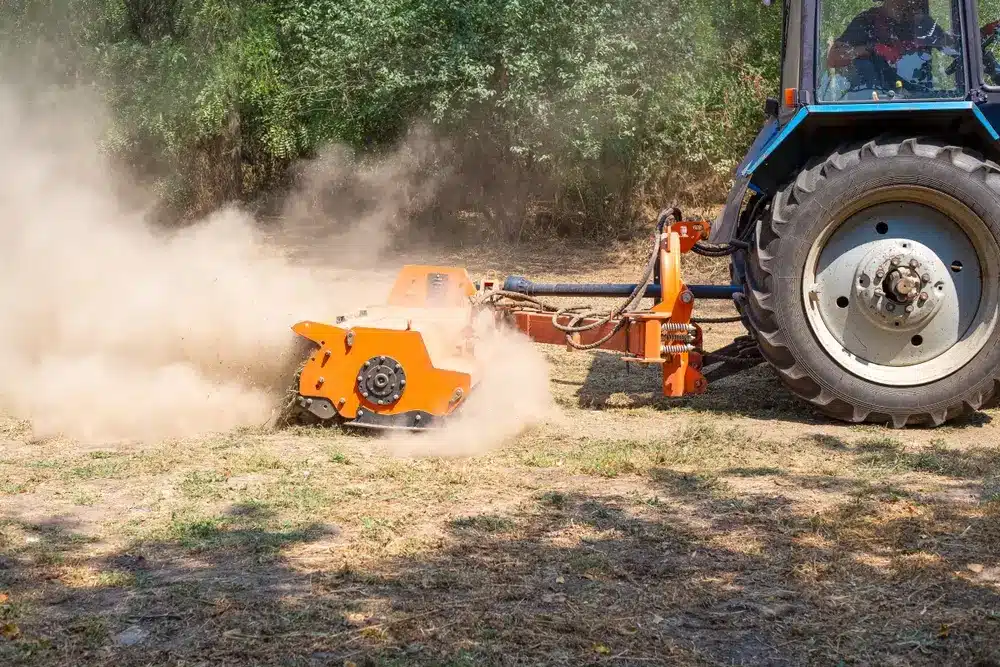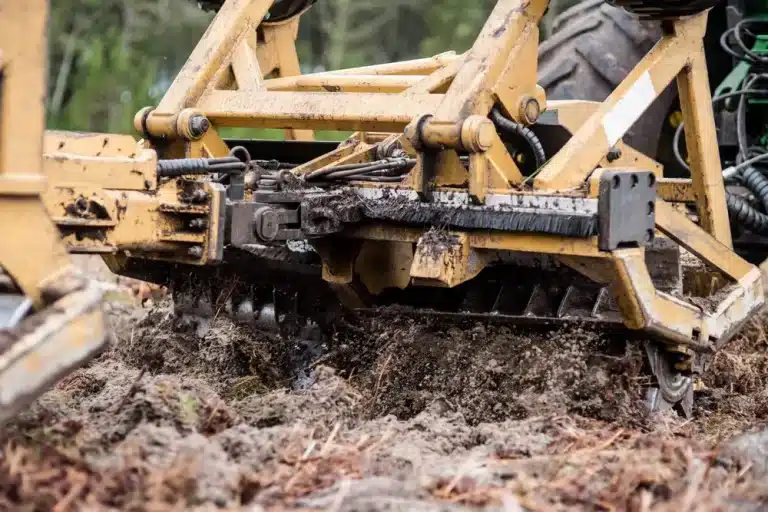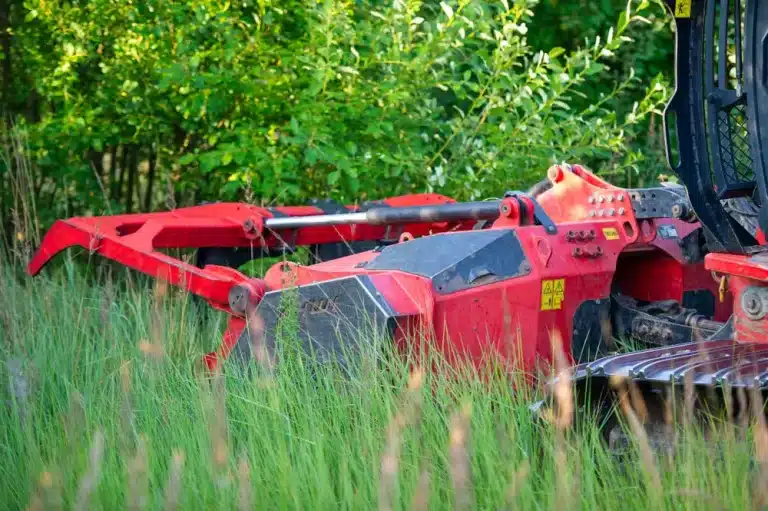You may be surprised to learn how forestry mulchers have revolutionized land management around Toulouse. These powerful machines not only clear dense brush with remarkable efficiency, but they also help preserve biodiversity and reduce wildfire risk in southern France’s dry Mediterranean climate.
What are forestry mulchers and how much do they cost?
Forestry mulchers are machines that cut, shred, and pulverize trees, brush, and dense vegetation. Most models attach to tractors, skid steers, or track carriers. They turn overgrown land into mulch on-site, reducing soil transport and preserving ground structure.
They are used for land clearing, wildfire prevention, site prep for roads and utilities, and controlling invasive plants. Prices vary significantly: compact models start at $7,000, while heavy-duty versions can exceed $60,000. Brand, design, and attachments also impact cost.
How to choose the right forestry mulcher
When buying a mulcher, consider:
- Matching size and power to your land
- Choosing the right drum (fixed tooth, swinging hammer)
- Availability of parts and reliable support
- Safety features and ease of use
- Resale value and long-term maintenance needs
Why forestry mulching is a smart investment
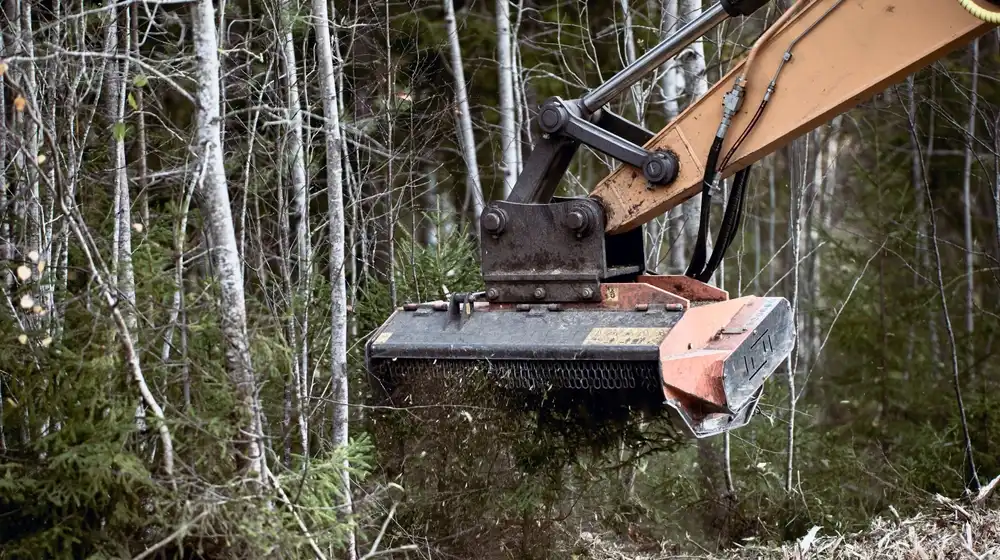
Forestry mulchers contribute to sustainable land use by stabilizing soil, reducing erosion, and encouraging new growth. The mulch layer they leave behind retains moisture, keeps soil cool, and suppresses weeds.
They also help reduce fire hazards by removing dry fuel sources. Compared to bulldozing or manual cutting, mulching is more cost-effective over time—especially when you factor in reduced need for cleanup or burning.
Practical benefits for landowners and contractors
Forestry mulchers provide:
- One-operator efficiency = lower labor costs
- Immediate mulch production, improving soil quality
- Access to varied terrain (steep, rocky, uneven)
- Minimal impact on root systems and wildlife
Depending on terrain and vegetation, a single machine can clear 1–4 acres per day—or up to 15 acres in optimal conditions.
Types of forestry mulchers and their uses
There are several main types of forestry mulchers:
- Drum mulchers – Best for dense brush and large trees (up to 30 inches)
- Disc mulchers – Ideal for fast cutting of small-to-medium trees
- Flail mulchers – Great for grass, weeds, and lighter vegetation
- Deck mulchers – Suited for open fields and small trees (up to 8 inches)
Common attachment types:
| Attachment Type | Best for |
| Skid Steer | General land clearing |
| Excavator | Steep or uneven terrain |
| Tractor | Large, flat fields |
| Dozer/Loader | Dense vegetation, heavy work |
Best practices for effective land clearing
Proper mulcher sizing is key: don’t under- or oversize your machine.
Daily and seasonal checks are essential:
- Inspect belts, blades, and fluids
- Clean debris from the machine
- Follow manufacturer safety and use guidelines
- Log hours and service intervals
- Replace wear parts before failure
Clear communication with operators and routine maintenance go a long way in reducing costs and downtime.
Common mistakes to avoid when using a mulcher
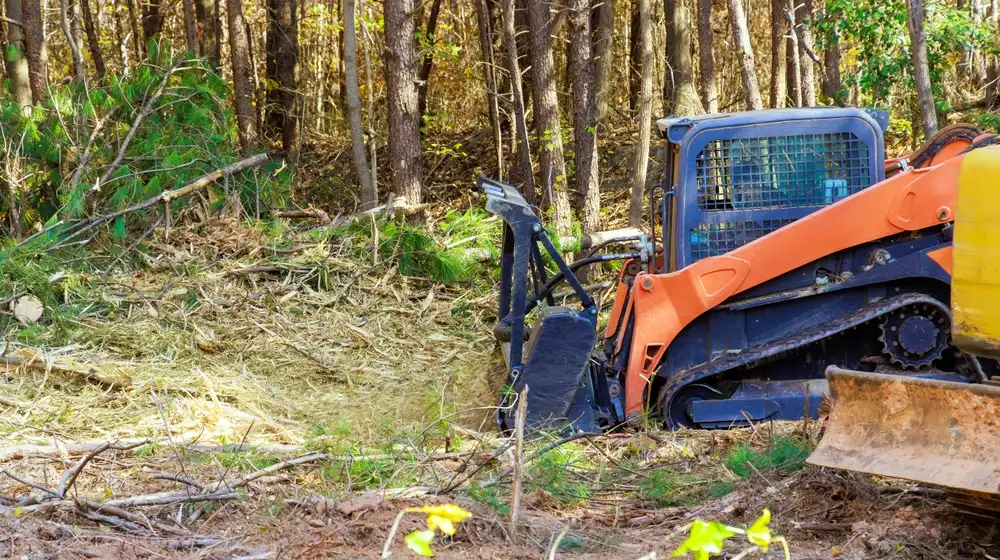
Mistakes that cost time and money:
- Skipping regular maintenance
- Overworking the machine on dense land
- Choosing the wrong type of mulcher for the terrain
- Ignoring hidden costs (fuel, parts, labor)
- Failing to prepare for sloped or rugged ground
Plan ahead. Get advice if you’re unsure. Match the mulcher to your land and workload—not just the price tag.
How to measure mulching success and ROI
Success depends on several measurable factors:
| Metric | What to Track | Typical Range |
| Area cleared | Acres or hectares per day | 1–4 acres/day |
| Tree diameter | Max cutting capacity | 6–30 inches (15–76 cm) |
| Operating cost | Per hour or per day | $150–$250/hr |
| Downtime | Repair or idle time | 1–5 hrs/month |
| Soil health | Erosion, moisture retention | Visual/soil testing |
| Operator feedback | Comfort and ease of use | Surveys or notes |
| Client satisfaction | Job outcome vs expectations | Client reviews |
